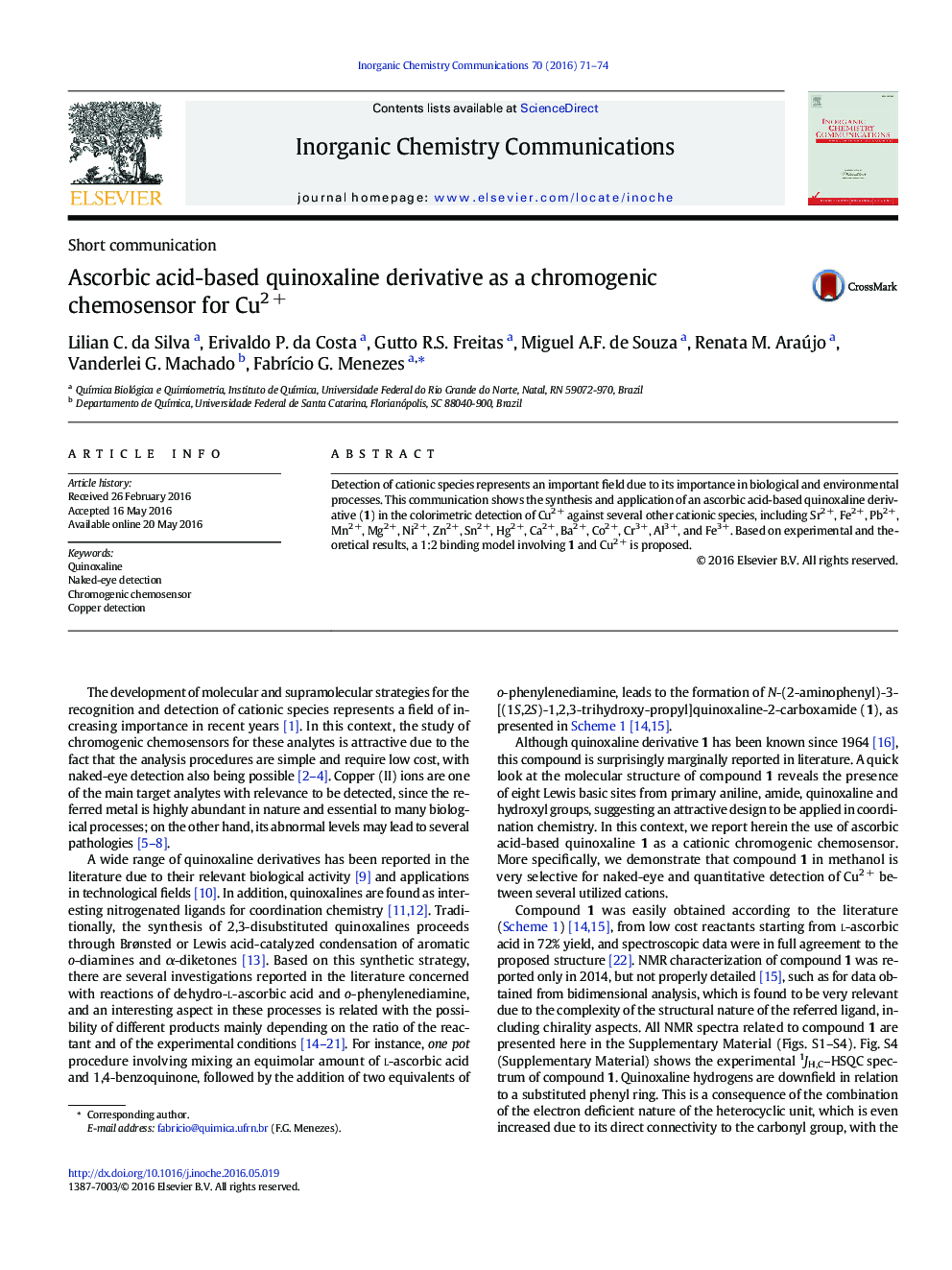| Article ID | Journal | Published Year | Pages | File Type |
|---|---|---|---|---|
| 1305212 | Inorganic Chemistry Communications | 2016 | 4 Pages |
•Chromogenic behavior of quinoxaline 1 toward sixteen cations was evaluated.•Naked-eye and UV–vis analysis show detection ability of compound 1 for Cu2 +.•Spectroscopic data suggest 1:2 binding between compound 1 and Cu2 +.•A binding model was proposed from infrared and theoretical results.
Detection of cationic species represents an important field due to its importance in biological and environmental processes. This communication shows the synthesis and application of an ascorbic acid-based quinoxaline derivative (1) in the colorimetric detection of Cu2 + against several other cationic species, including Sr2 +, Fe2 +, Pb2 +, Mn2 +, Mg2 +, Ni2 +, Zn2 +, Sn2 +, Hg2 +, Ca2 +, Ba2 +, Co2 +, Cr3 +, Al3 +, and Fe3 +. Based on experimental and theoretical results, a 1:2 binding model involving 1 and Cu2 + is proposed.
Graphical abstractFigure optionsDownload full-size imageDownload as PowerPoint slide
